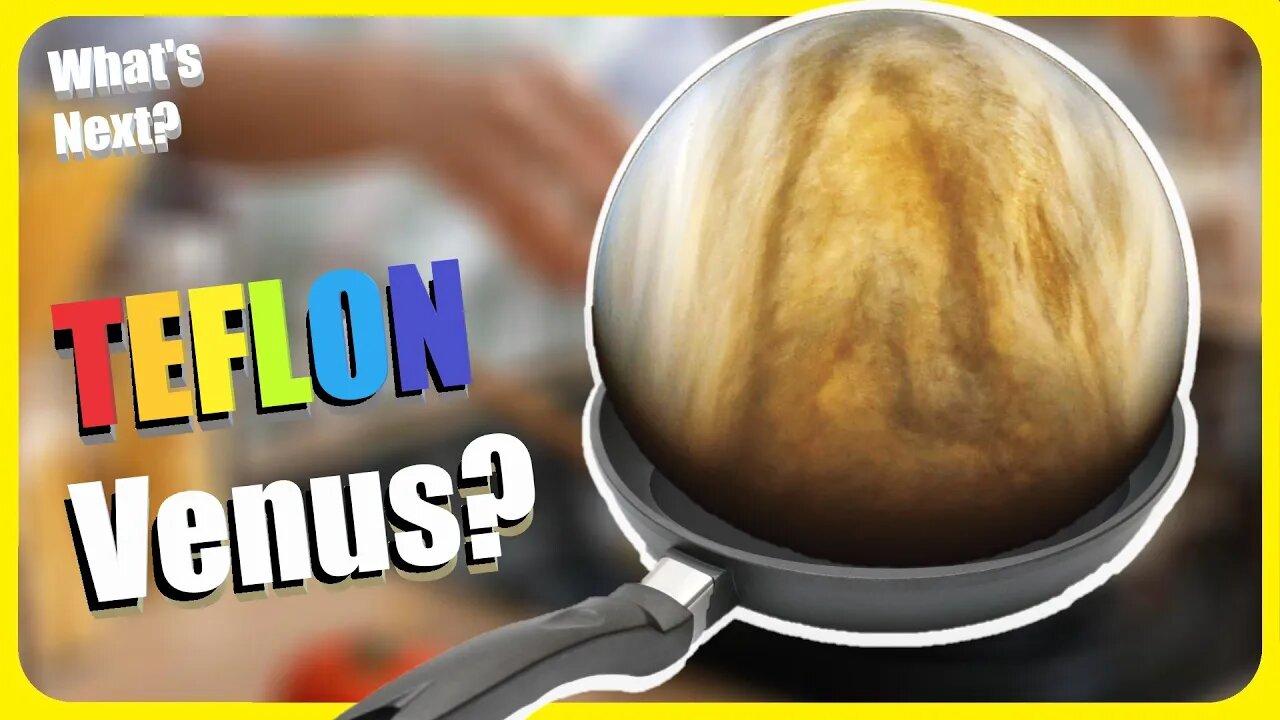Premium Only Content

Giving VENUS a Mountain Colony Above the Clouds
Vega Astro Video -
https://www.youtube.com/watch?v=ejR0V2891iA&t=4s
What's Next? on ODYSEE - https://odysee.com/@WhatsNext:5?view=content
WhatsNextVids on RUMBLE - https://rumble.com/user/WhatsNextVids
Whats.Next on BITCHUTE - https://www.bitchute.com/channel/Yq06nyAcliTf/
Patreon - https://www.patreon.com/user?u=37594401
Buy Me A Coffee? - https://www.buymeacoffee.com/whats.next
Donate With Cash App - https://cash.app/$YTpayments
Get Mentioned In Future Videos By Joining PATREON For As Little As $5 A Month
(and gain access to DOZENS of videos!)
Support Direct Improvements To The Channel With BUY ME A COFFEE
Or Make Direct Contributions With No Strings Attached With CASH APP
WANT MORE GREAT CONTENT?
SUBSCRIBE 2 THESE GREAT CHANNELS!
Vega Astro - https://www.youtube.com/channel/UCejLQCRfKR1XAmDeRRv3ifA
Terran Space Academy - https://www.youtube.com/channel/UCGzgxO2YKjk9yYKLwBjyeVA
Mars Matters - https://www.youtube.com/channel/UCPFLOxf5-AgE0QlaXhzol_Q
https://www.quora.com/Would-it-be-possible-to-build-a-great-mountain-on-Venus-so-high-people-would-be-in-the-clouds-and-able-to-start-a-colony-there
Would it be possible to build a great mountain on Venus, so high people would be in the clouds and able to start a colony there?
At least as early as 1971[10] Soviet scientists had suggested that rather than attempting to settle Venus' hostile surface, humans might attempt to settle the Venusian atmosphere. Geoffrey A. Landis of NASA's Glenn Research Center has summarized the perceived difficulties in colonizing Venus as being merely from the assumption that a colony would need to be based on the surface of a planet:
However, viewed in a different way, the problem with Venus is merely that the ground level is too far below the one atmosphere level. At cloud-top level, Venus is the paradise planet.
Landis has proposed aerostat habitats followed by floating cities, based on the concept that breathable air (21:79 oxygen/nitrogen mixture) is a lifting gas in the dense carbon dioxide atmosphere, with over 60% of the lifting power that helium has on Earth.[11] In effect, a balloon full of human-breathable air would sustain itself and extra weight (such as a colony) in midair. At an altitude of 50 kilometres (31 mi) above the Venusian surface, the environment is the most Earth-like in the Solar System beyond Earth itself – a pressure of approximately 1 atm or 1000 hPa and temperatures in the 0 to 50 °C (273 to 323 K; 32 to 122 °F) range. Protection against cosmic radiation would be provided by the atmosphere above, with shielding mass equivalent to Earth's.[12]
At the top of the clouds the wind speed on Venus reaches up to 95 m/s (340 km/h; 210 mph), circling the planet approximately every four Earth days, in a phenomenon known as "super-rotation".[13] Compared to the Venusian solar day of 118 Earth days, colonies freely floating in this region could therefore have a much shorter day-night cycle. Allowing a colony to move freely would also reduce structural stress from the wind that they would experience if tethered to the ground.
At its most extreme, the entirety of Venus could be covered in aerostats, forming an artificial planetary surface. This would be supported by the atmosphere compressed beneath it.[14]
Advantages
Because there is not a significant pressure difference between the inside and the outside of the breathable-air balloon, any rips or tears would cause gases to diffuse at normal atmospheric mixing rates rather than an explosive decompression, giving time to repair any such damages.[11] In addition, humans would not require pressurized suits when outside, merely air to breathe, protection from the acidic rain and on some occasions low level protection against heat. Alternatively, two-part domes could contain a lifting gas like hydrogen or helium (extractable from the atmosphere) to allow a higher mass density.[15] Therefore, putting on or taking off suits for working outside would be easier. Working outside the vehicle in non-pressurized suits would also be easier.[16]
Remaining problems
Structural and industrial materials would be hard to retrieve from the surface and expensive to bring from Earth/asteroids. The sulfuric acid itself poses a further challenge in that the colony would need to be constructed of or coated in materials resistant to corrosion by the acid, such as PTFE (a compound consisting wholly of carbon and fluorine).
Studies
In 2015, NASA developed the High Altitude Venus Operational Concept (HAVOC) for exploring the possibility of setting up an atmospheric crewed mission.[17]
-
 LIVE
LIVE
TheSchleppy
5 hours ago✨TheSchleppy✨EWC COUNTER STRIKE 2 GRAND FINAL *MONGOLZ v AURORA*
45 watching -
 6:34:50
6:34:50
SpartakusLIVE
14 hours ago#1 Saturday Spartoons on RUMBLE PREMIUM
126K7 -
 1:04:59
1:04:59
Man in America
15 hours ago“Summoning the Demon” — The AI Agenda Is FAR WORSE Than We Know w/ Kay Rubacek
61.5K46 -
 2:16:48
2:16:48
Tundra Tactical
13 hours ago $0.14 earned🎯💥 The World’s Okayest Gun Show 🔫😂 | LIVE Tonight on Rumble!
44.6K1 -
 3:36:03
3:36:03
Mally_Mouse
1 day ago🌶️ 🥵Spicy BITE Saturday!! 🥵🌶️- Let's Play: Tower Unite!
67K3 -
 58:59
58:59
MattMorseTV
13 hours ago $1.76 earned🔴Trump just BROKE Newsom.🔴
89.1K102 -
 18:14
18:14
Her Patriot Voice
13 hours agoWho Is WORSE for NYC: Trump Girl or Socialist?
66.2K36 -
 3:39:42
3:39:42
SavageJayGatsby
13 hours agoSpicy Saturday with Mally! | Road to 100 | $300 Weekly Goal for Spicy Bites!
59K1 -
 3:35:50
3:35:50
FomoTV
15 hours ago🚨 Swamp Theater: FBI Raids Bolton 🕵 Still NO Epstein Files, Trump's Troops & the Red Heifer Hoax 🐂 | Fomocast 08.23.25
28.5K7 -
 6:04:40
6:04:40
Akademiks
18 hours agoRoc Nation & Meg Thee Stallion did a 7 HOUR Deposition with me. Drake Secret Kid Finally Revealed.
63.9K3